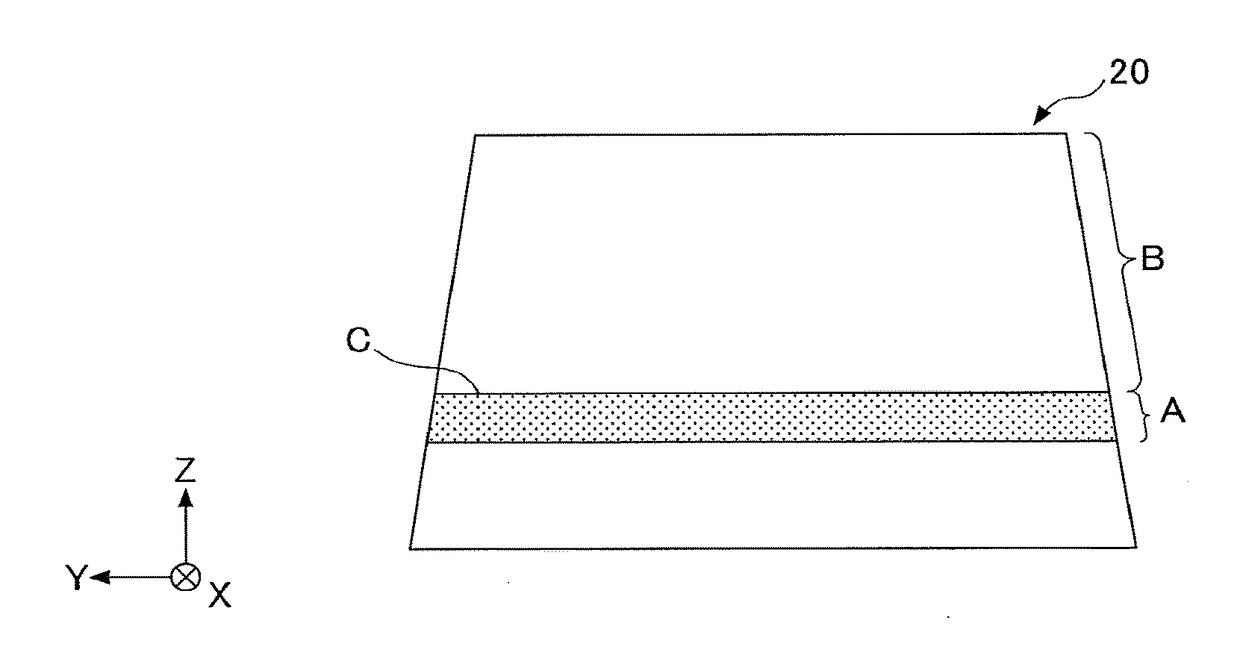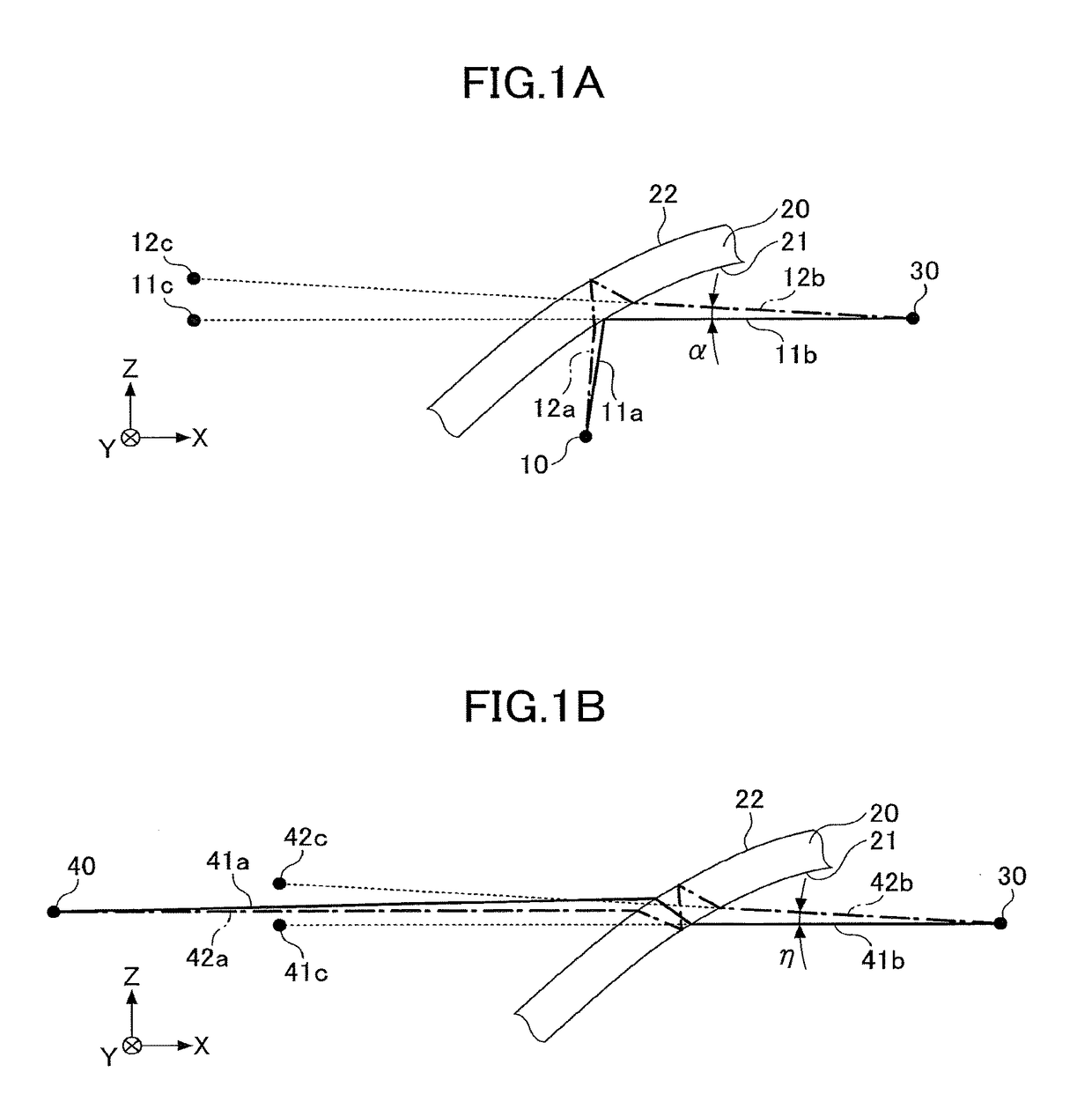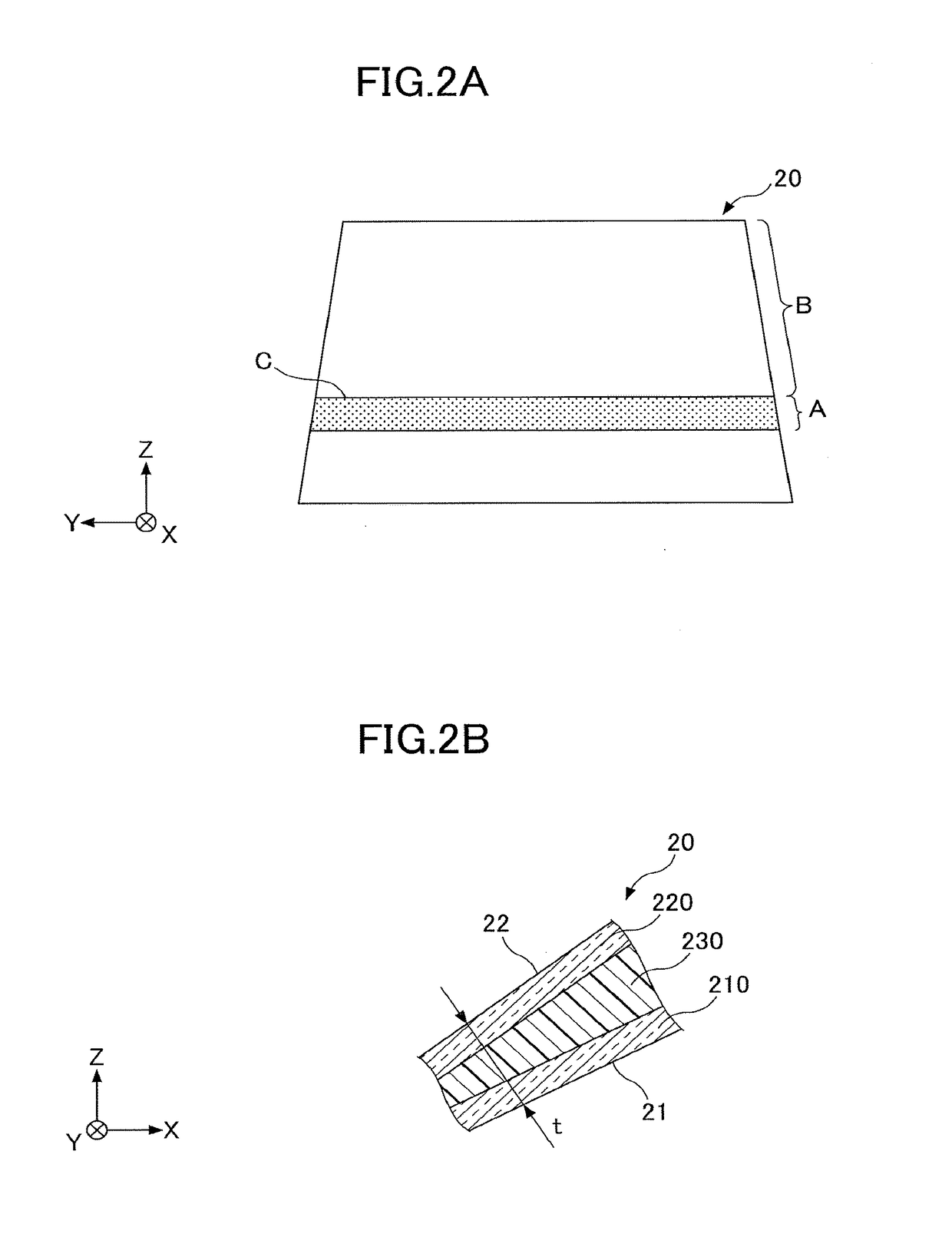Glass
a technology of glass and shards, applied in the field of glass, can solve the problems of double images, pose problems for the driver of a vehicle, and double images in perspective may also pose problems
- Summary
- Abstract
- Description
- Claims
- Application Information
AI Technical Summary
Benefits of technology
Problems solved by technology
Method used
Image
Examples
application example 1
Description of Application Example 1 and Comparative Examples 1 to 4
[0050]First, comparative examples 1 to 4 will be described. The comparative example 1 is a case in which both the wedge angle δ in the HUD-display area A and the wedge angle δ in the non-HUD-display area B are zero mrad (the inner surface 21 and the outer surface 22 of the windshield 20 are always parallel to each other in the HUD-display area A and the non-HUD-display area B). The comparative example 2 is a case in which both the wedge angle δ in the HUD-display area A and the wedge angle δ in the non-HUD-display area B are 0.7 mrad. The comparative example 3 is a case in which the wedge angle δ in the HUD-display area A is 0.7 mrad, and the wedge angle δ in the non-HUD-display area B is zero mrad.
[0051]The comparative example 4 is a case that is described in Patent Document 1. In other words, that is the case in which the wedge angle δ in the HUD-display area A is determined based on the following Formulas (5), (6...
application example 2
[0068]In the application example 1, the example has been described in which Formula (1) is applied to the entire area of the non-HUD-display area B that includes the edge on the boundary C side in the non-HUD-display area B. However, Formula (1) has an object to prevent change of the wedge angle at the boundary C, and hence, may not be necessarily applied to the entire area of the non-HUD-display area B. Thereupon, in the application example 2, an example will be described in which Formula (1) is applied only to a partial area of the non-HUD-display area B that includes the edge on the boundary C side in the non-HUD-display area B. Other matters are the same as in the application example 1 unless specifically described.
[0069]FIG. 8 illustrates change of the wedge angle in the X-direction where the HUD-display area A is set in the range of 400 mm≦X1 and B2. Further, Formula (1) is applied to the area B1 of the non-HUD-display area B that is adjacent to the boundary C. Note that the s...
PUM
| Property | Measurement | Unit |
|---|---|---|
| wedge angle | aaaaa | aaaaa |
| wedge angle | aaaaa | aaaaa |
| wedge angle | aaaaa | aaaaa |
Abstract
Description
Claims
Application Information
 Login to View More
Login to View More - R&D
- Intellectual Property
- Life Sciences
- Materials
- Tech Scout
- Unparalleled Data Quality
- Higher Quality Content
- 60% Fewer Hallucinations
Browse by: Latest US Patents, China's latest patents, Technical Efficacy Thesaurus, Application Domain, Technology Topic, Popular Technical Reports.
© 2025 PatSnap. All rights reserved.Legal|Privacy policy|Modern Slavery Act Transparency Statement|Sitemap|About US| Contact US: help@patsnap.com



